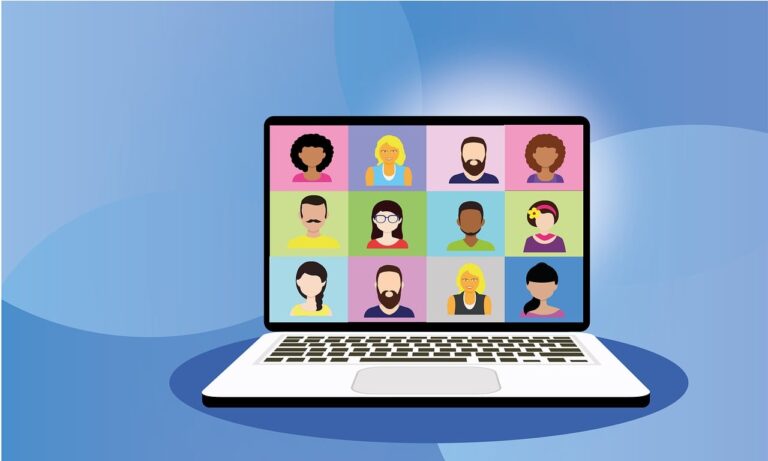
The New Reality of Work
The New Reality of Work
Throughout the pandemic, we got to see a lot more of each other’s personal lives. While traditional office norms dictate that co-workers draw rigid lines between work and home, the pandemic showed us that sticking to rigid conventions can be an impediment in itself. The Scrum pillars of inspect and adapt were truly put to the test, and we took the opportunity to learn and grow.
MCTC Ltd is a consultancy company specialising in Change & Transformation consultancy and training. When it comes to adapting to the new reality of work, they understand the importance of flexibility and embracing change. As the pandemic blurred the boundaries between work and home, MCTC Ltd recognises that rigid conventions may no longer be effective. By taking inspiration from the #DontRushChallenge, they aim to encourage individuals to reflect on what they have learned during this past year and apply those valuable insights to their new reality of work. For more information on how MCTC Ltd can assist you in navigating and thriving in this evolving work landscape, sSpeak to MCTC today about our consultancy advice and training packages.

This image is property of i.ytimg.com.
The New Reality of Work
The Impact of the Pandemic on Work
The COVID-19 pandemic has had a profound impact on the way we work. With the sudden shift to remote work and the need for social distancing, traditional office norms were disrupted, and we were forced to adapt to a new reality. This change brought both challenges and opportunities, as we had to find new ways to collaborate and stay productive while navigating the uncertainties of the pandemic.
Redefining the Work-Life Balance
One of the major shifts that came with the pandemic was the redefinition of the work-life balance. With the boundaries between work and home no longer clearly defined, many people found themselves working longer hours and struggling to disconnect. However, this also created an opportunity for individuals to reassess their priorities and find a better balance between work and personal life. Companies that prioritise work-life balance and offer flexible working arrangements are more likely to attract and retain top talent in this new reality.
The Rise of Remote Work
Remote work has quickly become the new norm for many professionals during the pandemic. With the advancements in technology and the ease of access to virtual collaboration tools, it is now possible to work from anywhere. This shift has not only provided employees with greater flexibility and autonomy but has also allowed companies to tap into a global talent pool. Remote work has proven that productivity can be maintained outside of a traditional office setting and has opened up opportunities for companies to reduce overhead costs associated with maintaining physical offices.
Challenges and Opportunities of Remote Work
While remote work offers numerous benefits, there are also challenges that come with this new way of working. Communication and collaboration can be more challenging in a remote work environment, and it requires individuals to be proactive and intentional in maintaining connections with their colleagues. Additionally, remote work can blur the boundaries between work and personal life, leading to potential burnout if not managed properly. However, by implementing strategies such as setting boundaries, establishing a dedicated workspace, and practising self-care, individuals can navigate these challenges and thrive in a remote work environment.
Insights from the #DontRushChallenge
The Purpose behind the Challenge
The #DontRushChallenge was a viral social media trend that emerged during the pandemic. It involved individuals creating and sharing videos in which they transformed their appearances from casual to formal attire. While the challenge was primarily meant to entertain, it also served as a reminder of the importance of maintaining a sense of normalcy and connection during difficult times. It showcased the creativity and resilience of individuals around the world and highlighted the power of social media in fostering a sense of community.
Lessons Learned from the Challenge
The #DontRushChallenge taught us the importance of adaptability and embracing change. In a world that suddenly became uncertain and unpredictable, the challenge encouraged us to find joy in the simple things and to make the most of our current circumstances. It reminded us that even in challenging times, we can come together, support one another, and find creative ways to stay connected. This lesson is especially relevant in the context of remote work, where the ability to adapt and embrace change is crucial for success.
The Importance of Flexibility
Flexibility emerged as a key theme from the #DontRushChallenge. The ability to adapt to new situations and embrace change has become essential in the new reality of work. Whether it’s adjusting to remote work, adopting new technologies, or finding innovative ways to collaborate, being flexible allows individuals and organisations to thrive in uncertain times. The challenge showed us that by embracing flexibility and embracing new opportunities, we can overcome challenges and create a more resilient and adaptable workforce.
Embracing the New Reality of Remote Work
Adapting to Remote Work
Adapting to remote work requires a shift in mindset and the development of new skills. It involves learning how to effectively communicate and collaborate in virtual environments, managing time and priorities without direct supervision, and finding ways to stay motivated and focused. Embracing remote work also requires individuals to create a conducive work environment at home, free from distractions and interruptions. By being adaptable and willing to learn, individuals can successfully navigate the challenges of remote work and thrive in this new reality.
Tips for a Successful Remote Work Experience
To have a successful remote work experience, it is important to establish a routine and stick to it. Set clear goals and deadlines for yourself, create a designated workspace that promotes focus and productivity, and establish boundaries between work and personal life. Regularly communicate with your colleagues and managers to stay connected and aligned on expectations. Additionally, leverage technology tools to facilitate collaboration and maintain regular social interactions with your team. By implementing these tips, you can create a productive and enjoyable remote work experience.
Building Connections in a Remote Work Environment
Building connections and fostering a sense of belonging are crucial in a remote work environment. It requires individuals and organisations to be intentional in creating opportunities for social interaction and team bonding. Schedule regular virtual team meetings and social activities to maintain a sense of camaraderie. Encourage open communication and transparency, and prioritise building relationships with your colleagues. By actively working to build connections, you can create a strong and supportive remote work environment.
Hybrid Work Models and the Future of Work
Defining Hybrid Work
Hybrid work models combine elements of remote work and in-person work, allowing employees to have the flexibility to work from both home and the office. This model of work has gained popularity as companies recognise the benefits of both remote and in-person collaboration. Employees have the freedom to choose when and where they work based on their preferences and the nature of their tasks. Hybrid work models enable companies to maintain the advantages of remote work, such as increased productivity and access to a diverse talent pool, while also fostering in-person collaboration and innovation.
Advantages and Disadvantages of Hybrid Work
Hybrid work models offer several advantages. Employees have the flexibility to work in environments that best suit their needs and preferences, which can lead to increased job satisfaction and work-life balance. Companies can tap into a wider talent pool and reduce overhead costs associated with maintaining physical offices. However, there are also disadvantages to consider. Hybrid work requires clear communication and coordination to ensure that teams are aligned and working effectively. There is also a risk of creating a divide between remote and in-person employees if not managed properly. Companies must carefully consider the advantages and disadvantages of hybrid work and develop strategies to mitigate potential challenges.
Preparing for the Transition to Hybrid Work
Preparing for the transition to a hybrid work model requires careful planning and communication. Companies should assess their infrastructure and technology to ensure that employees have the necessary tools to work effectively from both home and the office. Clear policies and guidelines should be established to set expectations for remote and in-person work. Training and support should be provided to help employees navigate the transition and adapt to new ways of working. By proactively preparing for the transition to hybrid work, companies can smoothly navigate the change and optimise the benefits of this work model.

This image is property of static01.nyt.com.
The Role of Change & Transformation Consultancy
Supporting Organisations in Adapting to the New Reality
Change and transformation consultancy plays a crucial role in supporting organisations in adapting to the new reality of work. These consultancies provide expertise in change management, helping organisations navigate the complexities of transitioning to remote or hybrid work models. They offer guidance on organisational restructuring, process optimisation, and technology implementation to enable seamless remote collaboration and communication. Change and transformation consultancies also facilitate the development of new skills and mindsets to ensure that employees can thrive in the new reality of work.
Training and Development for Remote Work
Change and transformation consultancies offer training and development programs specifically designed to enhance remote work skills. These programs cover topics such as virtual communication and collaboration, time management, and maintaining work-life balance. They equip employees with the necessary skills to navigate the challenges of remote work and maximise their productivity and well-being. By investing in training and development for remote work, organisations can ensure that their employees have the knowledge and tools to excel in this new way of working.
Addressing Challenges and Driving Success
Change and transformation consultancies help organisations address the challenges associated with remote and hybrid work models. They provide strategies and solutions to overcome communication and collaboration barriers, establish effective remote work policies, and promote a positive remote work culture. These consultancies also help drive success by aligning the organisation’s goals and objectives with the new reality of work, optimising processes and workflows, and fostering employee engagement and satisfaction. By partnering with change and transformation consultancies, organisations can navigate the complexities of the new work landscape and drive long-term success.
Conclusion
The pandemic has brought about a new reality of work that requires us to adapt, be flexible, and embrace change. Remote work has become the norm for many, and hybrid work models are gaining popularity. While these new ways of working come with challenges, they also present numerous opportunities for individuals and organisations. By understanding the impact of the pandemic on work, embracing the lessons learned from trends like the #DontRushChallenge, and leveraging the expertise of change and transformation consultancies, we can navigate this new reality and create a future of work that is adaptable, productive, and fulfilling.
